|
-
28th October 18, 11:11 AM
#1
 Basting/Washing/Pleating Bulk Threat Basting/Washing/Pleating Bulk Threat
So the time has come for me to clean my kilts, and I wanted to make sure I have everything in order and ask some questions about a few areas I had concerns about. I also wanted to create a kind of "Master Threat" that will allow anyone who wants to find this same information without having to search everywhere for it. Hopefully this can serve both purposes.
First, from everything that I can see, a basting stitch is simply used to hold pieces of fabric together, correct? Most all of the ones that I can see that are kilt related are all done with a sewing machine, is this necessary? Can I do the stitch by hand? I feel as though I lack some important information about this part somewhere.
Second, I understand that ironing/repleating will be needed. Is there a secret to getting those sharp pleats, that I am missing? I use an iron with steam on wool setting with a cotton shirt beneath to prevent damage. Mine always seem to get billowy at the selvedge.
I plan to use the kilt cleaning information found here unless someone else has a better idea?
Is there any complication that I could be missing, problem I am not foreseeing at this point?
Thanks for all the information!
Last edited by BEDickey1337; 28th October 18 at 11:47 AM.
-
-
28th October 18, 12:33 PM
#2
You don't wanna do it on a machine since it'll be a pain in the thòn to remove it afterwards. I just did that zig-zaggy stitch I've seen in photos to baste the edge of each pleat to the fabric below it, both at the selvage and halfway to the fell, along with more thorough basting for the apron edges and where the pleats meet in the middle (mine are all RevK). And I didn't even need to re-press them afterwards. Though there is one other thing I did to insure that the instructions to only clean and not press would be followed:
noplanchar.jpg
Couldn't find any chalk so I had to embroider that freehand. And I did tell the clerk that it's nothing personal, I'm just paranoid. And I did tell the clerk that it's nothing personal, I'm just paranoid.
-
The Following User Says 'Aye' to Dollander For This Useful Post:
-
28th October 18, 12:50 PM
#3
Ok, let me see if I can help.
If your kilt is made from wool you can hand wash it in the bathtub. Cold water and a cap full of hair shampoo. Walk on it. Then rinse repeatedly until all the soap is out. Wrap in a towel and walk on that till soaked. Remove and replace towel. Walk again until as much water is out of the kilt as possible. Then, and only then, lift the kilt out of the tub. Hang and allow to air dry.
Or you can simply take it to your local dry cleaner. Tell them - and have them write in big red letters - DO NOT PRESS. As long as they just clean it and hang it the pleat creases should stay.
If you kilt is of almost any other fabric such as Acrylic, Poly/Rayon, Poly/Cotton or 100% Cotton you can wash your kilt in a machine. Again, cold water and liquid detergent.
Hang to dry all kilts except those made with Cotton which you can also machine dry on a permanent press setting.
Then you will probably need to iron almost all other fabrics other than the Poly/Rayon ones.
If your pleats are edge stitched follow the lines of stitching and the iron is to remove wrinkles.
But - If for some reason the pleat creases are lost you will need to baste and re-press.
Basting is done by hand. They are temporary stitches sort of like pinning. But pins leave bumps. So we stitch with thread to avoid the bumps.
The idea behind basting is to hold the pleats while we press. The basting holds not only one pleat to another but also the Tartan pattern alignment to the edge of the pleat crease.
But there is a problem. The area known as the Fell is tapered. This means that the kilt will no longer lay flat. If the Fell is flat the pleats are splayed outward. So you must lift the Fell to get the pleats to lay flat, straight and parallel.
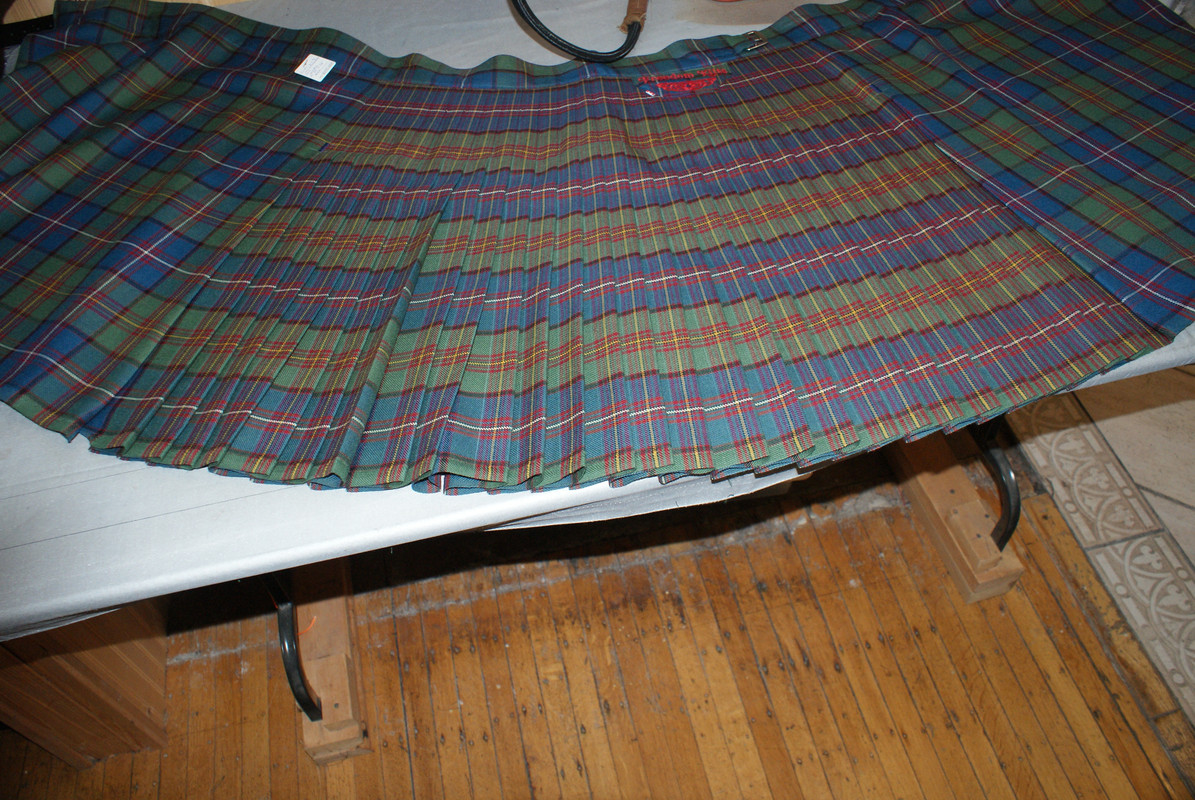

If you are just ironing out wrinkles I find it helpful to use a piece of formica as a shield to protect the pleats.
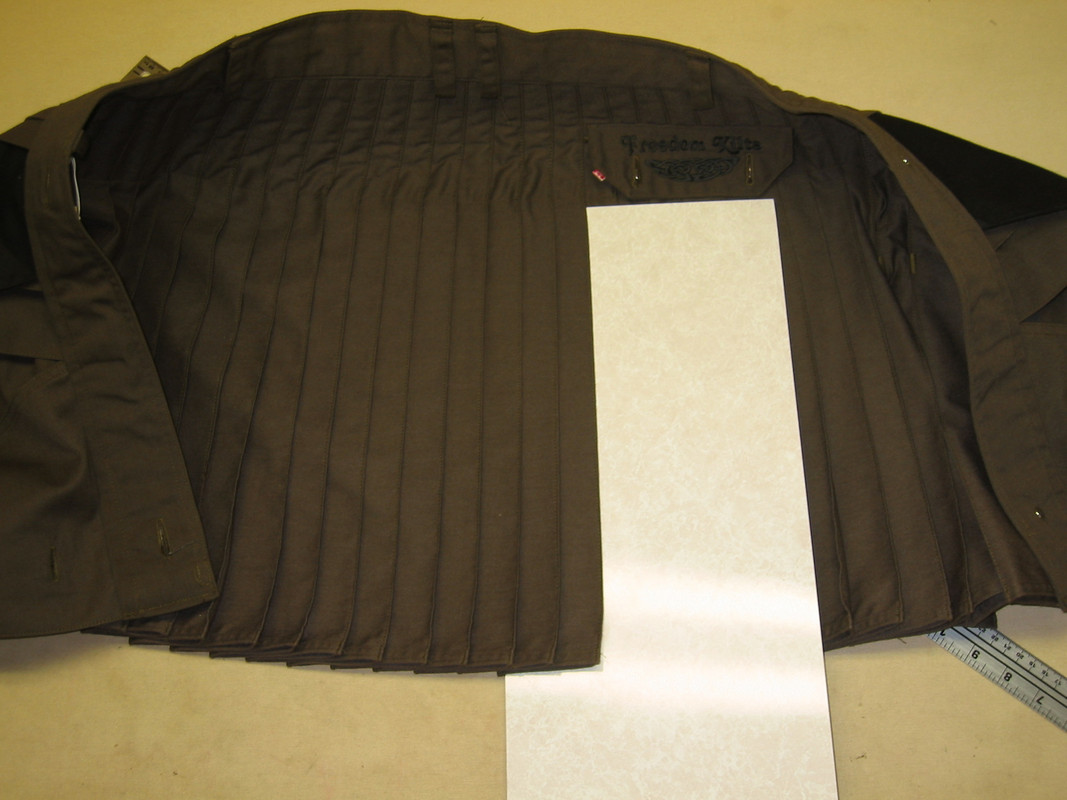
There are two things you are looking at as you baste. Keeping the Tartan pattern the same distance from the pleat edge and also the width of each pleat.
This is easy if you are pleated to stripe. Just follow the lines.
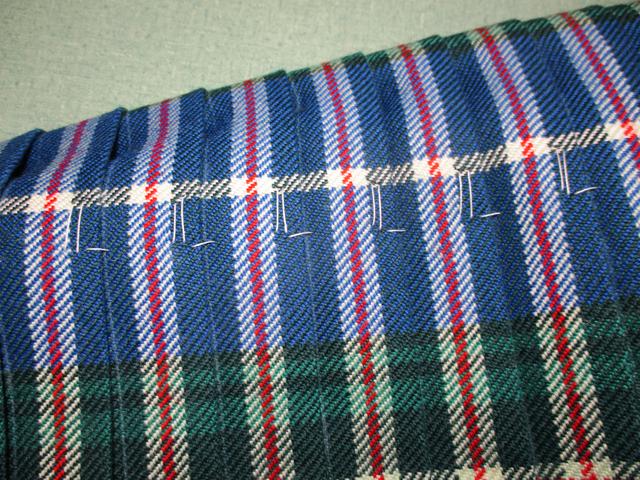
If pleated to Sett it is helpful to lay a strip of fabric on top of the pleats. One of the aprons can be used for this if you don't have a spare strip of your fabric.

The idea is to keep the pleats straight and parallel with the Tartan pattern the same distance away from the creased edge as possible.
If you do this the pleats will sort of automatically align the Tartan pattern and form a straight line at the bottom.
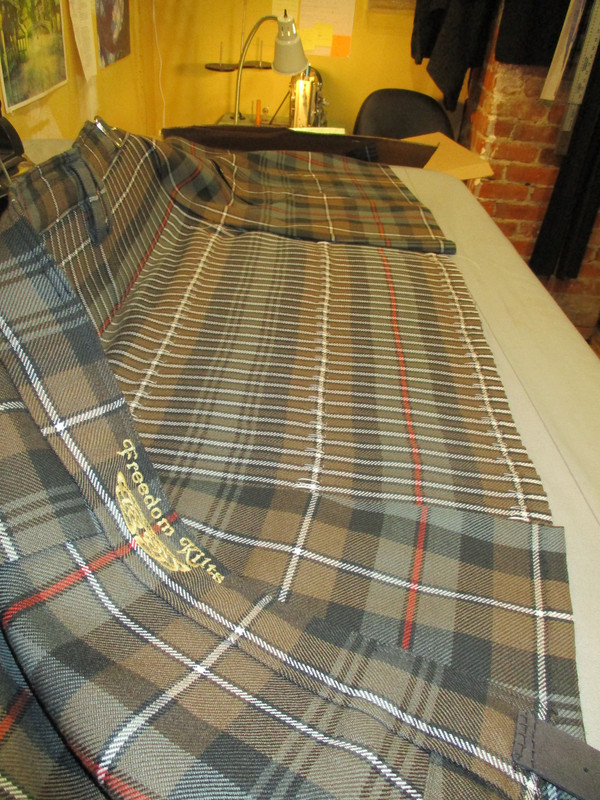
When your kilt is all basted you will press new pleat creases. We use the heat of steam to soften the fibers of the fabric. Lots and lots of steam.
]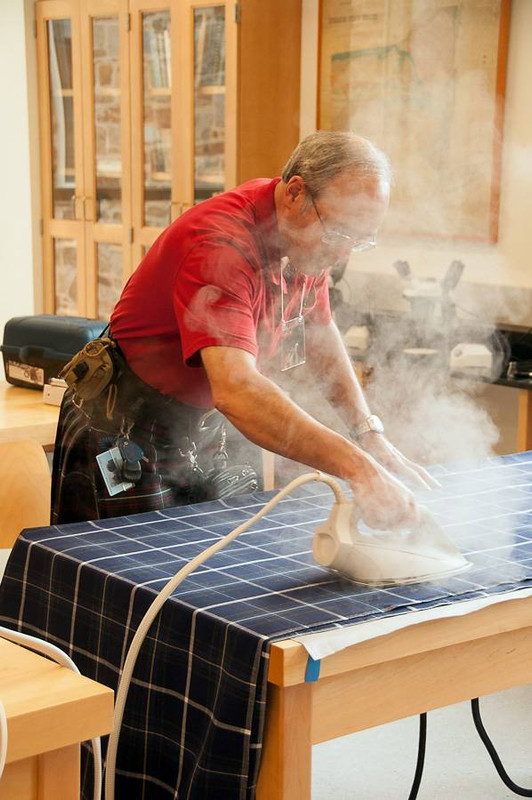
If your steam iron does not have a teflon sole plate to protect the fabric from the hot metal you put a pillow case or some other pressing cloth on top of the fabric.
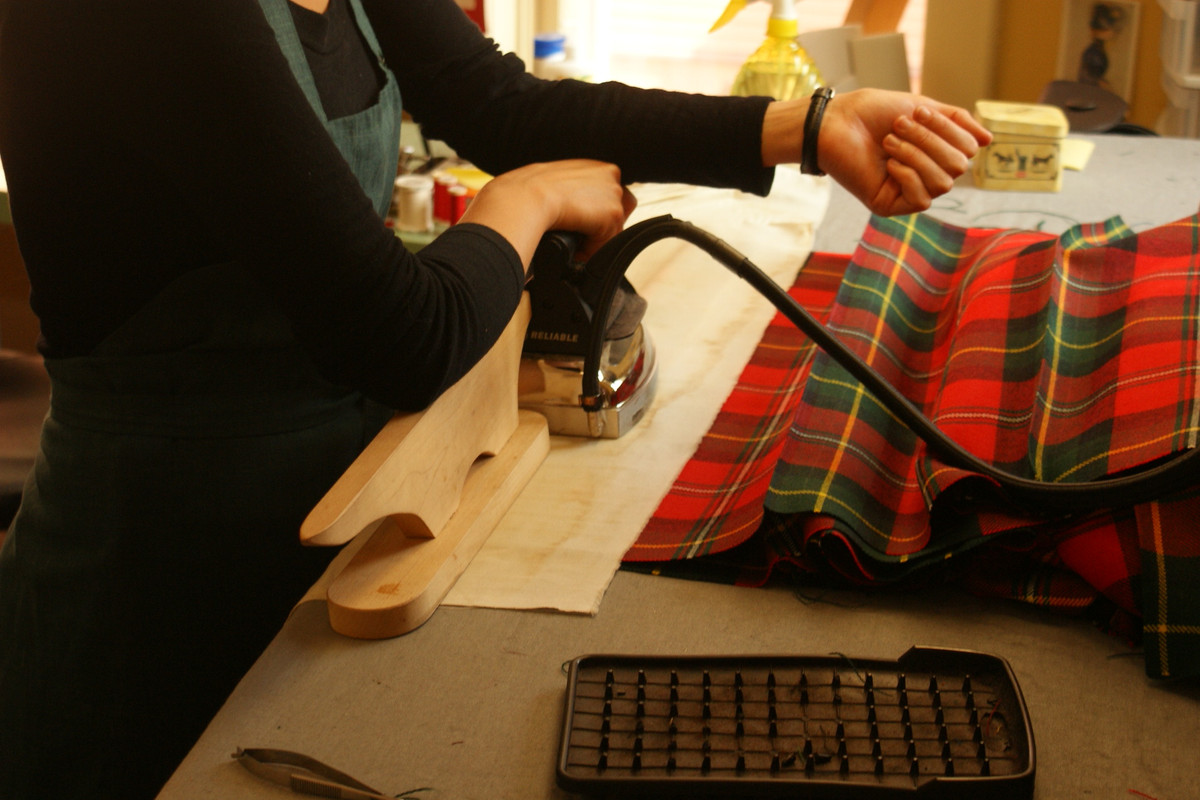
While the fabric fibers are hot you never, ever, move the iron over the fabric. It will distort really easily.
You put the iron down, press down hard, lift the iron to a new place and press down again.
Then allow the fabric to cool before moving anything. Do the outside and the inside of the pleats. Here Barb is using a pressing "Clapper" to suck the heat out of the fabric to speed things up.

When the fabric is cool and the pleat creases are nice and sharp you can remove the temporary basting stitches and the back of your kilt should look like this. One smooth line across the back without any puckers, ripples or wayward pleats. Until you move you should not be able to tell that the pleats are even there.
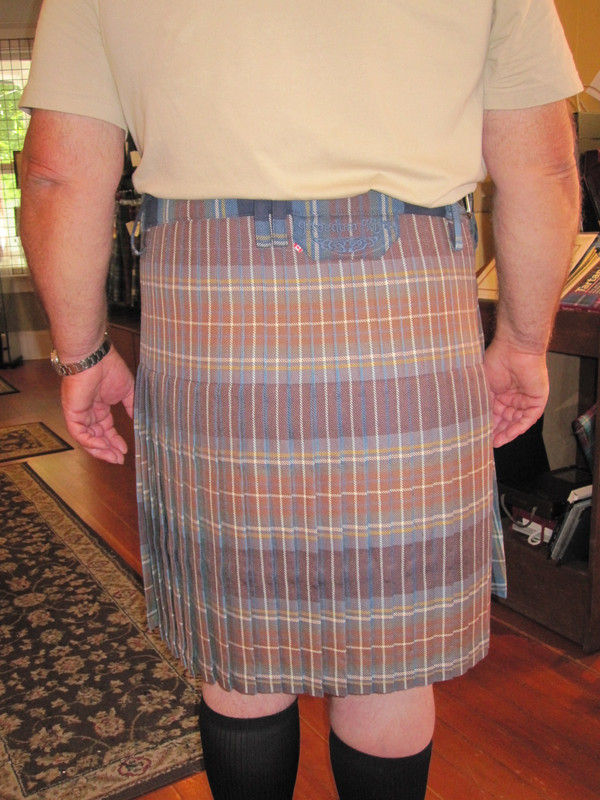
Last edited by The Wizard of BC; 28th October 18 at 01:02 PM.
Steve Ashton
www.freedomkilts.com
Skype (webcam enabled) thewizardofbc
I wear the kilt because: Swish + Swagger = Swoon.
-
The Following User Says 'Aye' to The Wizard of BC For This Useful Post:
Tags for this Thread
 Posting Permissions
Posting Permissions
- You may not post new threads
- You may not post replies
- You may not post attachments
- You may not edit your posts
-
Forum Rules
|
|

























Bookmarks